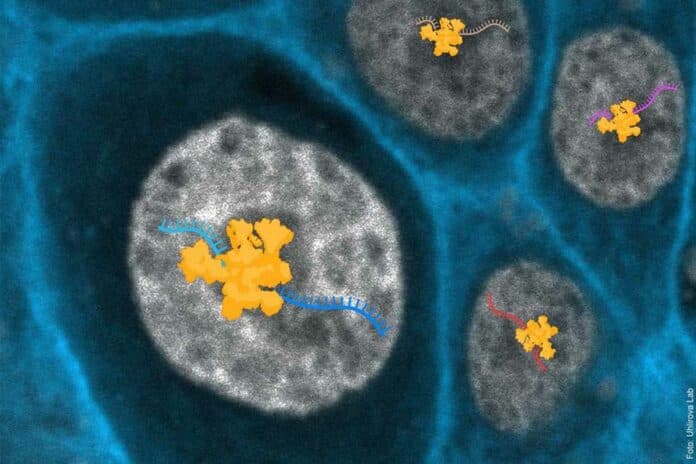The genetic material, found in the form of DNA, holds crucial information for the proper functioning of human and animal cells. This information generates RNA, an intermediate molecule between DNA and proteins, the building blocks of cells. During this process, specific adjustments are made to the genetic information to suit the needs of each cell. Unnecessary information (introns) is removed from the RNA, while the essential components for proteins (exons) are preserved.
A team of researchers led by Professor Dr. Mirka Uhlirova at the University of Cologne‘s CECAD Cluster of Excellence in Aging Research has found that when this information processing goes awry, a protein complex (C/EBP heterodimer) is activated. This complex steers the cell into a dormant state known as cellular senescence.
A molecular machine called the spliceosome is present in organisms with a cell nucleus (eukaryotes). The spliceosome carries out ‘splicing,’ a process that removes unnecessary sections (introns) and connects essential parts (exons) to create messenger RNA (mRNA). Dysfunctions in the spliceosome can result in diseases known as spliceosomopathies, impacting various tissues and causing conditions such as retinal degeneration or myelodysplastic syndrome affecting the bone marrow.
Using the fruit fly Drosophila melanogaster as a model organism, researchers in the Uhlirova lab investigated how cells respond to malfunctioning spliceosomes during development. The study utilized genomics and functional genetics to understand the role of individual genes and their interactions.
The research revealed that cells with defective spliceosomal U5 snRNP activate a stress signaling response and exhibit cellular behaviors characteristic of cellular senescence. Cellular senescence alters vital cell functions, preventing cell division while promoting secretion. Senescence is a protective response to preserve damaged cells, as their immediate elimination could be more harmful. However, the accumulation of senescent cells can negatively impact tissues and the entire organism, necessitating their eventual removal.
The team identified a protein complex called C/EBP-heterodimer, specifically Xrp1/Irbp18, as the crucial factor driving the stress response caused by faulty splicing. Increased levels of Xrp1/Irbp18 in damaged cells led to heightened protein production and induced a state resembling cellular senescence.
Professor Dr Mirka Uhlirova at the University of Cologne’s CECAD Cluster of Excellence in Aging Research said, “Senescence is a double-edged sword. One advantage of senescent cells is that they are not all eliminated by cell death simultaneously, thus maintaining the integrity of the tissue. After all, partially intact tissue is better than none at all. However, these cells create problems in the long term, as their accumulation promotes disease and ageing.”
“A functioning spliceosome is a basic prerequisite for healthy cells, tissue, and the entire organism. Additional investigation of the stress signaling program we have identified will be important to further unpack the complex responses triggered by defects in the essential machines controlling gene expression – and how we can influence them.”
In the future, the results could contribute to the development of therapeutic approaches to treat diseases that are caused by malfunctions of the spliceosome.”
Journal Reference:
- Mirka Uhlirova et al.: ‘Xrp1 governs the stress response program to spliceosome dysfunction’, Nucleic Acids Research, 2 February 2024. DOI: 10.1093/nar/gkae055
